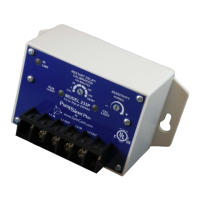What to do if SymCom PumpSaver Plus 233P-1.5 Control Unit PumpSaver®Plus shows OVERCURRENT?
- GgrayjohnAug 5, 2025
If the SymCom Control Unit displays an OVERCURRENT message, it means the pump has shut off due to an overcurrent condition. The unit will automatically try to restart after a delay, assuming the line voltage is acceptable. You should check for low or high voltage, or jammed pump impellers. If these conditions aren't present, recalibrate the unit while it's drawing higher current, ensuring the amperage doesn't exceed the SFA.

